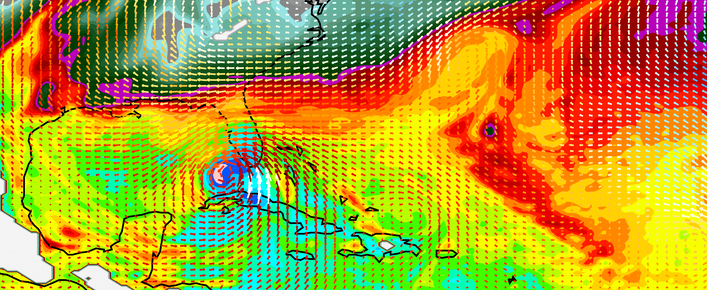The data used to compile the report includes that gathered by the EU-funded airship PEGASOS, which has been measuring the air quality over Europe to link air pollution to climate change, and RECONCILE, which helped find the first ever observed hole in the ozone layer in the Arctic region.In its fifth assessment report, released on 27 September, the IPCC concluded that there is an at least 95 % likelihood that humans are the dominant cause of global warming. That makes them the surest they have ever been that humans are causing climate change.Scientists are able to be so categorical because of the number of research papers that have been taken into account in producing the report. It cites over 9 200 scientific publications, more than three quarters of which have been published since the previous assessment in 2007, and bases its conclusions on millions of observations.‘Up to now it is the only endeavour of this kind of science in the world,’ said Dr Anastasios Kentarchos, the deputy head of the Climate Change and Natural Hazards Unit at the European Commission’s Directorate-General for Research and Innovation, who was present during the discussions in Stockholm running up to the publication of the report. ‘This is a huge pool of scientists that on a voluntary basis are giving their brains and their minds for five years to do this work,’ he added referring to the IPCC report.Unprecedented in 800 000 yearsAtmospheric concentrations of carbon dioxide, methane, and nitrous oxide have increased to levels unprecedented in at least the last 800 000 years, the report said.“‘Up to now it is the only endeavour of this kind of science in the world.’Dr Anastasios Kentarchos, the deputy head of the Climate Change and Natural Hazards Unit at the European Commission’s Directorate-General for Research and InnovationThe EU’s in-house science service, the Joint Research Centre, has provided critical data on worldwide emissions through its EDGAR database, which models emissions of greenhouse gases and air pollutants.The rise in greenhouse gases is likely to mean that global temperatures will increase by over 1.5 degrees Celsius by the end of this century, when compared to the 1850 to 1900 period, according to all but the lowest scenario considered by the report.‘Continued emissions of greenhouse gases will cause further warming and changes in all components of the climate system,’ said Thomas Stocker, the co-chairman of the IPCC group that assesses the physical science basis for climate change.Climate modelsComplex computer models, such as those developed by the EU-funded ENSEMBLES project, are required to allow the panel to make such forecasts. The project has modelled the simultaneous activity of the oceans, land and the atmosphere to show that the world will experience further measurable climate change.The European airship PEGASOS. © PEGASOSThe European airship PEGASOS. © PEGASOSOther research groups concentrated on specific aspects, like Ice2Sea, which forecasts that by 2100 storm surges along Europe’s coastline could be up to 1 metre higher than they are today, presenting challenges to flood defences and natural habitats.However, more data is needed to improve the accuracy of the models, for example by understanding the role of the permafrost, the permanently frozen layer of soil, in the Arctic regions on greenhouse gas levels. That’s now being done by the EU-funded PAGE21 project, which brings together permafrost researchers from Europe, Canada, Russia, the US, and Japan.‘The more observations you build, the better you understand the drivers of climate change and you can validate more accurately the next generation of climate models,’ said Dr Kentarchos.Future research should concentrate on improving the capacity of climate models to make forecasts on a regional scale, providing data that is useful for farmers as they plan how best to use their land, or governments as they decide where to invest money to protect their citizens from climate change.‘The models are useful to stakeholders when they give you trustworthy information at the right regional or sub-regional scale,’ said Dr Kentarchos.
This article was originally published in Horizon, the EU Research and Innovation magazine.
Add to favorites:
Share:
Listing Description
Video
Documents
No documents available.
Ask KETMarket to make a contact
Connect with the Listing Owner!
💬 Please log in now to askKETMarket to make a contact. Not a member yet? Sign up for free and start connecting today!
Video
Related Funding and Finance Opportunities
Unlock Exclusive Funding Opportunities!
🔑 Get instant access to tailored funding opportunities that perfectly match your needs. This powerful feature is exclusively available to our premium members—helping you save time, stay ahead of the competition, and secure the right funding faster.
Upgrade to Premium now and never miss an important opportunity again! Already a premium member? Log in here to explore your matches.
Related Innovation Offers
Discover Tailored Innovation Offers!
🚀 Gain access to technology solutions that match your specific needs and interests—carefully selected to support your innovation goals. These offers are exclusively available to our premium members, helping you identify relevant technologies faster and start the right conversations with potential partners.
Upgrade to Premium now and explore your personalized technology matches today! Already a premium member? Log in here to view your tailored offers.
Related Knowledgeable Resources
Discover More with Premium: Related Knowledge Resources
🔒 You’re missing out on expert-curated knowledge specifically matched to this topic. As a Premium member, you gain exclusive access to in-depth articles, guides, and insights that help you make smarter decisions, faster.
Whether you’re preparing a funding proposal, researching a new market, or just need reliable information—our Premium knowledge matches save you hours of research and point you directly to what matters.
Upgrade to Premium now and instantly unlock relevant knowledge tailored to your needs! Already a member? Log in here to view your personalized content.

